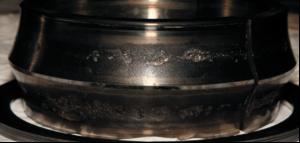

|
Edward Lowton
Editor |


|
| Home> | Efficient Maintenance | >Maintenance products | >Low speed solution |
ARTICLE
Low speed solution
25 January 2013
In conjunction with the company's 40th anniversary, SPM Instrument AB has introduced the next generation of its shock pulse method. SPM HD (High Definition) is an advanced measuring technique suitable for all types of a

In conjunction with the company's
40th anniversary, SPM Instrument
AB has introduced the next
generation of its shock pulse
method. SPM HD (High Definition)
is an advanced measuring technique
suitable for all types of applications
and well suited for low speed
machinery.
The technique combines the True SPM method with an advanced digital technique. SPM HD can distinguish weaker yet relevant signals, which are typically hidden among stronger signals caused by mechanical shock phenomena or electronic noise. The ability to detect very weak signals is useful when measuring at low speeds. Testing has provided up to six months warning, leaving time to plan maintenance.
The technique works with digital enveloping of the analog shock pulse transducer signal. The sampling frequency is high, resulting in a distinct signal. A 24-bit A/D converter provides razor-sharp resolution and detail in spectrums and time signals.
For a full picture of bearing condition, the measuring cycle is based on number of revolutions rather than time.
The technique combines the True SPM method with an advanced digital technique. SPM HD can distinguish weaker yet relevant signals, which are typically hidden among stronger signals caused by mechanical shock phenomena or electronic noise. The ability to detect very weak signals is useful when measuring at low speeds. Testing has provided up to six months warning, leaving time to plan maintenance.
The technique works with digital enveloping of the analog shock pulse transducer signal. The sampling frequency is high, resulting in a distinct signal. A 24-bit A/D converter provides razor-sharp resolution and detail in spectrums and time signals.
For a full picture of bearing condition, the measuring cycle is based on number of revolutions rather than time.
MORE FROM THIS COMPANY
- Boost your asset and maintenance performance with HD condition monitoring technologies!
- Three years’ pre-warning time
- Monitoring vibration
- Collaborative Innovation:Streamlining maintenance via digitisation
- World-class Condition Monitoring
- Condition monitoring programme
- Easy shaft alignment
- Condition monitoring equipment for Severn Trent Water
- Modern Sprinkler invests in LineLazer shaft alignment
- For continuous monitoring
OTHER ARTICLES IN THIS SECTION

















